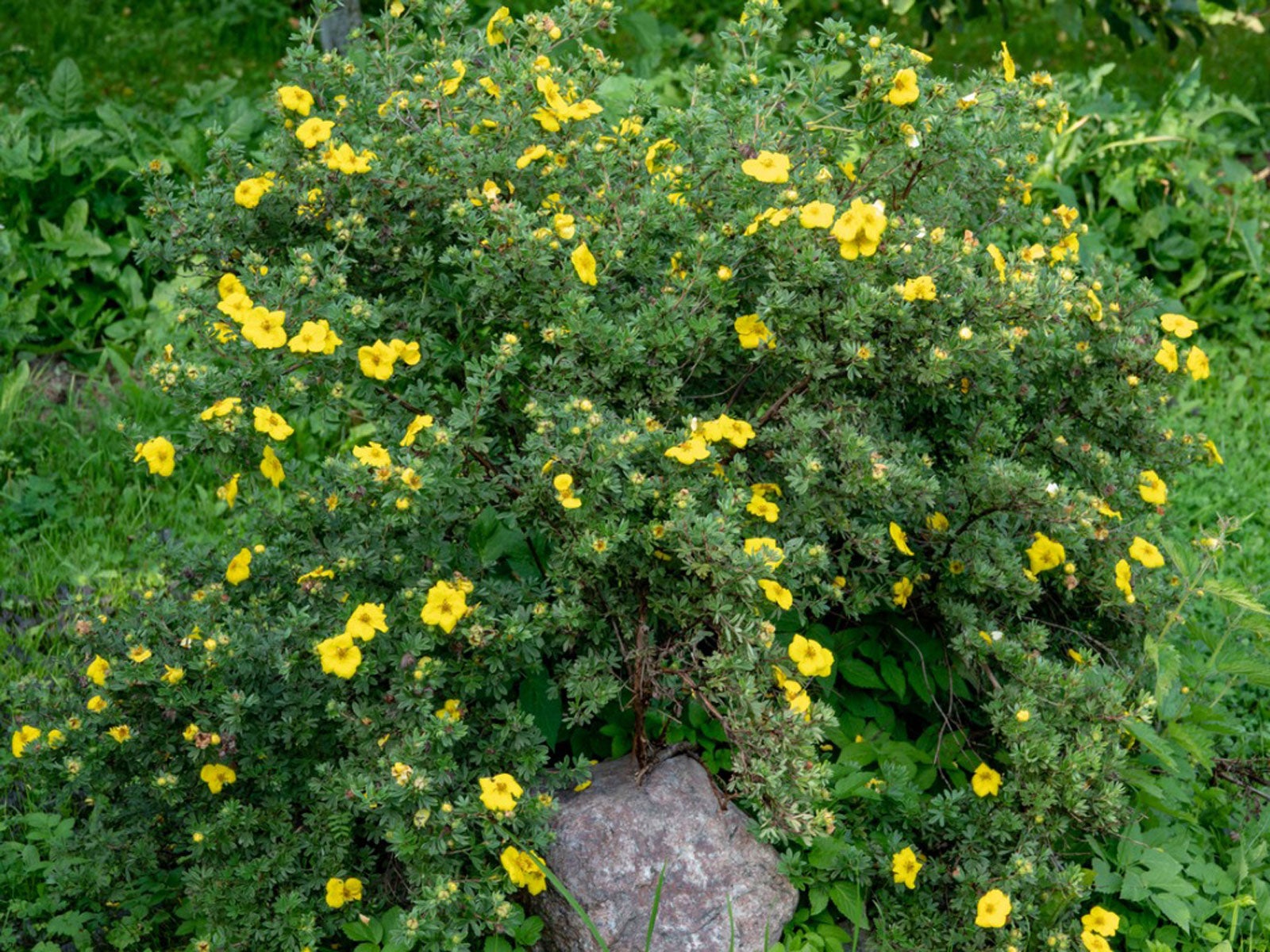Potentilla Plant Care: Tips For Growing Potentilla Shrub or Shrubby Cinquefoil
Bright yellow flowers cover shrubby cinquefoil. What it lacks in size it makes up in ornamental impact and our hungry pollinators will thank you.


Bright yellow flowers cover shrubby cinquefoil (Potentilla fruticosa) from early June until fall. The shrub grows only 1 to 3 feet (31-91 cm.) tall, but what it lacks in size it makes up in ornamental impact.
Gardeners in cold climates will find many uses for this hardy little shrub that thrives in climates as cold as USDA plant hardiness zone 2. Use it as a foundation plant, an addition to borders, in mass plantings, and as a groundcover.
Shrubby Potentilla Info
Although the species' shrubs produce single yellow flowers, you'll find many cultivars with color variations and some with double flowers.
- ‘Abbotswood' is a very popular cultivar with single white flowers and bluish green leaves.
- ‘Sunset' has orange flowers that fade to yellow in the heat of summer.
- ‘UMan' features bicolored red and orange flowers.
- ‘Primrose Beauty' blooms in a soft shade of yellow and has silvery leaves.
- ‘Medicine Wheel Mountain' has bright yellow flowers with ruffled petals. It is shorter than most cultivars and spreads about 4 feet (1 m.) wide.
Potentilla Plant Care
Potentilla needs full sun or light shade. A little shade during the heat of the day keeps the plant blooming longer. It prefers moist, fertile, well-drained soil but tolerates clay, rocky, alkaline, dry, or poor soils. Strong disease and insect resistance makes growing Potentilla easy. Here are some tips on how to care for Potentilla:
- Water Potentilla shrubs during prolonged dry spells. The plant survives without consistent watering but thrives when it gets plenty of moisture. This Native American shrub grows wild in boggy soils.
- Give the shrub a shovelful of compost in late spring as the flower buds begin to swell, or fertilize it with a complete fertilizer.
- At the end of the flowering season, cut out the old branches at ground level or rejuvenate the shrub by cutting the entire plant back to ground level and allowing it to regrow. After a few years, it takes on an awkward shape unless you cut it all the way back.
- Use organic mulch to help the soil retain moisture and discourage weeds. Pull back the mulch before the first freeze and then push it back around the plant when the ground is frozen.
Sign up for the Gardening Know How newsletter today and receive a free copy of our e-book "How to Grow Delicious Tomatoes".

Jackie Carroll has written over 500 articles for Gardening Know How on a wide range of topics.